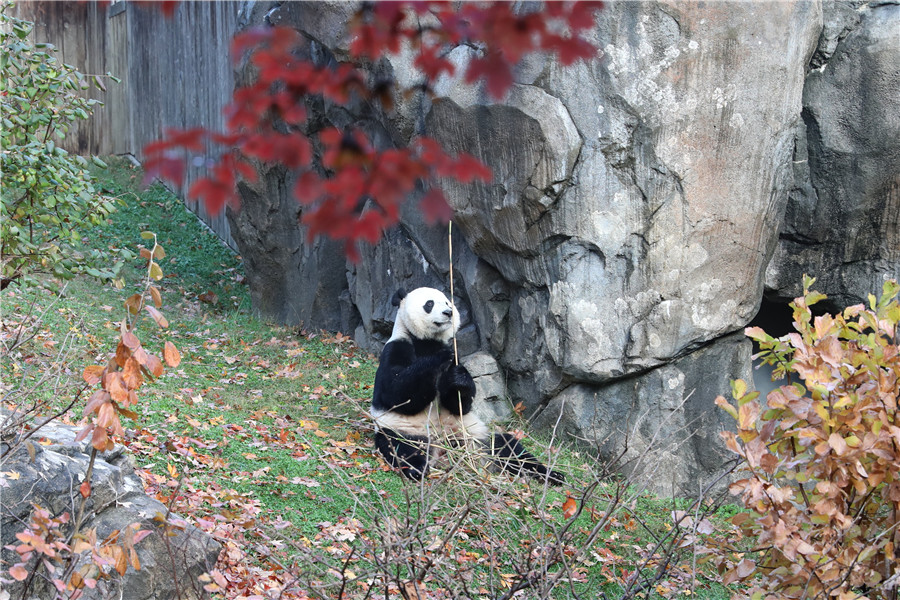
Bei Bei, a 4-year-old giant panda, was put on a FedEx plane for the first time Tuesday noon at Dulles International Airport to fly 16 hours nonstop to Chengdu, Southwest China. He left a bittersweet trail in the United States.
The cub had his last “American breakfast” of bamboo and leaf eater biscuits early in the morning, spent an hour in his outdoor habitat at the Smithsonian’s National Zoo, and was called back indoors and then went into a custom travel crate at around 8:15 am.
The crate was then loaded on a FedEx truck, which left the zoo at 9:30 am for the airport. Within three hours, Bei Bei was flying to China aboard a dedicated FedEx 777F plane, called the “Panda Express”, along with two of the zoo’s staff members, Laurie Thompson, who has cared for him since his birth, and Don Neiffer, chief veterinarian at the zoo.
Minister Li Kexin, deputy chief of mission at the Chinese embassy, and Steve Monfort, zoo director, joined animal care staff to waive goodbye to Bei Bei.
“Today is bittersweet,” Monfort said. “We’ve cared for Bei Bei, and along with millions, watched him grow into a true ambassador for his species. We look forward to continuing our 47-year giant panda conservation program and collaboration with Chinese colleagues to study, care for and help save the giant panda and its native habitat.”
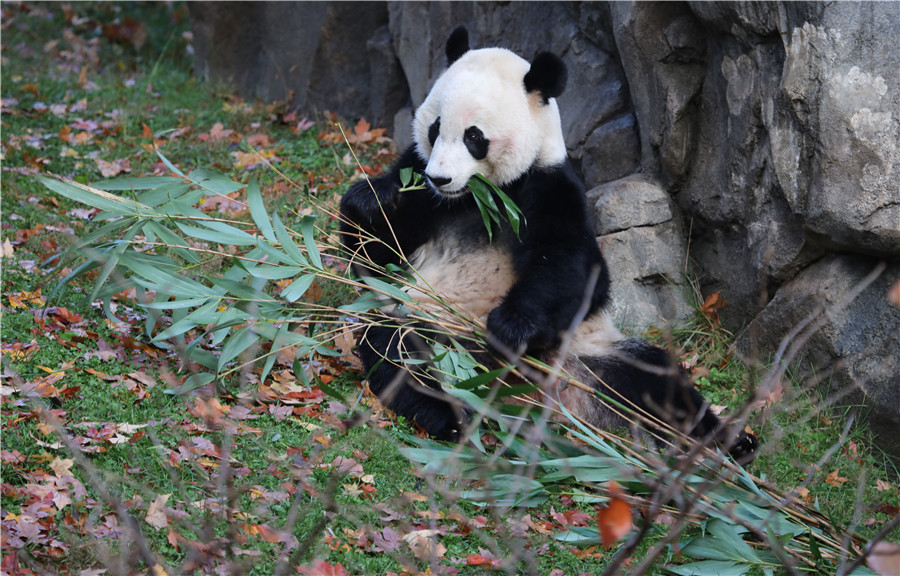
At least 12,000 visitors went to the zoo over the weekend to join “Bye Bye, Bei Bei”, a weeklong celebratory event, to bid farewell to the “American Sweetheart”, as he is called by some visitors, according to the zoo statistics.
On Monday afternoon, the last time Bei Bei made his public appearance, dozens of visitors seemed to be glued to the glassed enclosure where Bei Bei was playing.
They were following every move of the cub, who seemed unaware of his imminent departure.
Gena Kim, a video blogger from Los Angeles, who runs a YouTube channel dedicated to Bei Bei since he was born, livestreamed footage of Bei Bei foraging in the indoor habitat and eating a carrot.
“A lot of people are very sad to let him go because he’s an American sweetheart,” Kim said.
Cindy Gordon, who lives in the US capital, was taking photos with her smartphone. Tears streamed down her cheeks as she and other visitors finally had to leave at the repeated request of the zoo workers.
“I feel so sad that Bei Bei is leaving,” she said “He was the first panda I have ever bonded with when I moved here from New York.”
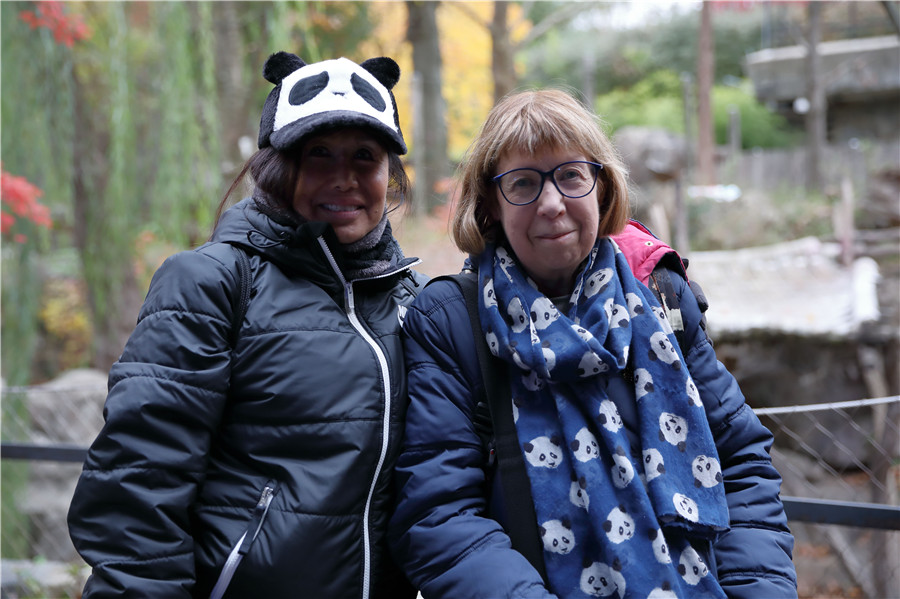
Gordon said she had visited Bei Bei more than 40 times over the past four years and liked watching him do somersaults in the snow.
“The pandas live alone — they are so isolated — but Bei Bei seems to be so content and happy. So, when I moved here and I was feeling lonely, I looked at Bei Bei, and saw he was very happy to be on his own.”
An area was being set up next to Bei Bei’s outdoor habitat where well-wishers can write postcards to him in China.
Gordon wrote on hers: “We are so sad that you’re leaving (Washington) DC, but we’re excited for the next chapter in your life. We hope you love your new home in China, and we hope to visit you there someday. Thank you for being our friend.”
In recent weeks, panda keepers at the zoo had made preparations to ensure Bei Bei was comfortable and safe during the 16-hour journey to China, which was scheduled to depart around noon Tuesday.
According to a zoo statement, the preparations included getting the cub used to a travel crate, first by training him to walk through it, then spending time inside with the door closed.
During Bei Bei’s trip to China, the two were to continuously monitor him. Bei Bei was sent with a supply of his favorite treats, including 66 pounds of bamboo, 2 pounds of apples and pears, two bags of leaf eater biscuits, 2 pounds of cooked sweet potatoes, and water, according to the zoo statement.
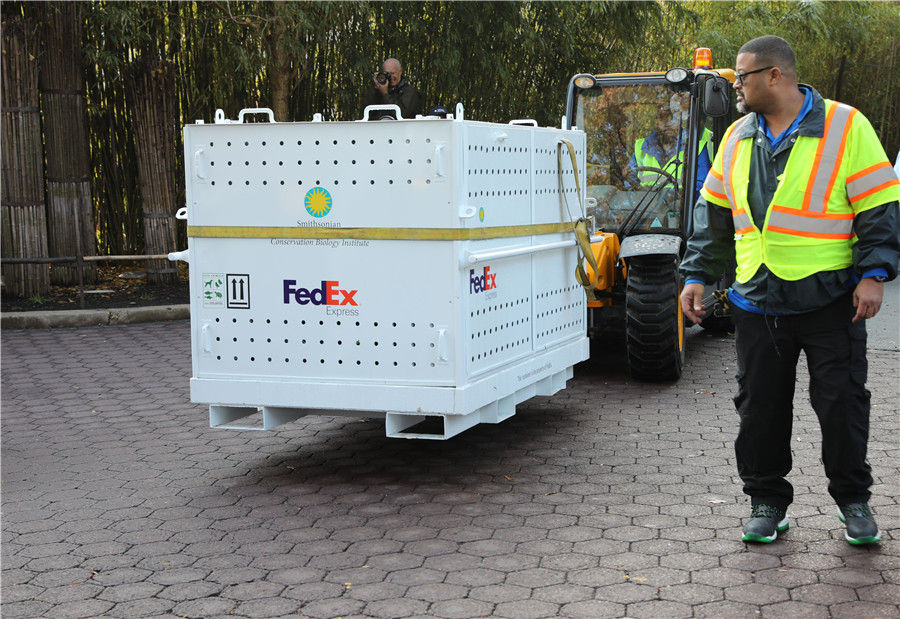
‘Part of our family’
Bei Bei is only the third surviving cub born at the Smithsonian’s National Zoo in Washington in more than four decades since the first pair, Ling Ling and Hsing Hsing, arrived in April 1972, weeks after then-US president Richard Nixon’s historic China visit.
Over the next 20 years, they produced five cubs, but none survived more than a few days.
In 2000, the situation changed when Mei Xiang and Tian Tian arrived in the United States. Mei Xiang gave birth to Tai Shan in 2005, and to Bao Bao eight years later. The cubs left for China in 2010 and 2017, respectively.
On Aug 22, 2015, Mei Xiang gave birth to a third cub. About a month later, the cub was named Bei Bei by then-US first lady Michelle Obama and Peng Liyuan, wife of President Xi Jinping. The name means “precious treasure”.
Under a cooperative breeding agreement between the zoo and the China Wildlife Conservation Association, all cubs born to pandas on loan from China are sent back to the nation when they are 4 years old. Bei Bei will enter the giant panda breeding program when he reaches sexual maturity between ages 5 and 7.
“Bei Bei is part of our family,” said Monfort. “We’re sad he’s leaving, but excited for the contributions he will make to the global giant panda population.”
Giant pandas, native to China, have long symbolized vulnerable species, with as few as 1,800 living in the wild.
Their conservation status improved in September 2016, when the species was upgraded from “endangered” to “vulnerable”, thanks to the efforts of the Chinese government, scientists, international conservation organizations and zoos such as the Smithsonian.
Kim, the video blogger from Los Angeles, said she was considering visiting China when Bei Bei unites with his brother and sister.
“I was waiting for Bei Bei to go to China, and that gives me a reason to go visit Tai Shan, Bao Bao and Bei Bei all at one time,” Kim said.
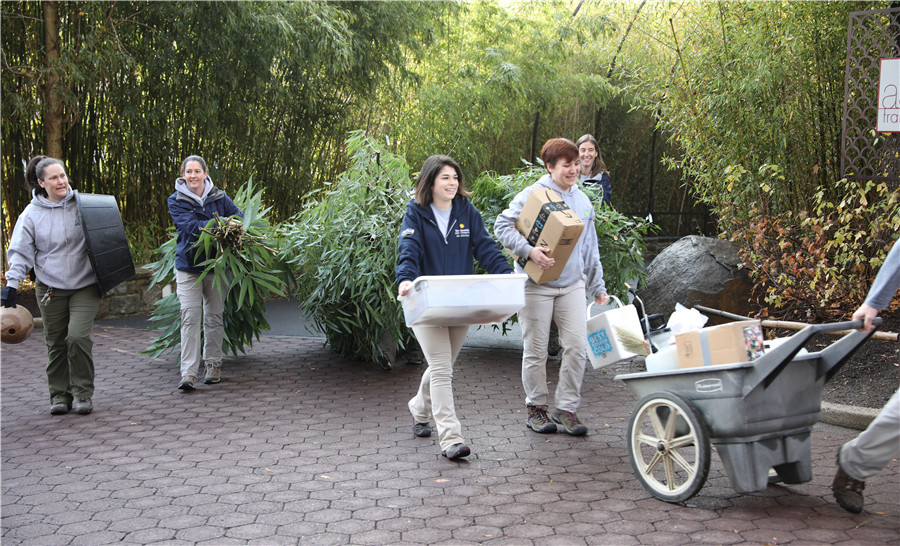
Departure prompts fan’s long-distance mission
On Nov 7, Elspeth Grindlay, who lives in Ayr, a coastal town in southwest Scotland, flew more than 3,100 miles (5,000 km) to Washington on short notice after learning about Bei Bei’s departure.
“Because I watched him grow up from a tiny cub, I had to return before Bei Bei left,” Grindlay said on Nov 12.
“It’s just sad. It’s a sort of bittersweet. It’s lovely to come, but about a week from today, he is going,” she said.
It was Grindlay’s 10th visit to see the pandas in Washington since 2001. She said the Smithsonian’s National Zoo is a “lovely place” for panda fans, because unlike the London Zoo, there are no fences, walls or glass outside, so the animals can be seen more easily.
She said she had made friends in the “panda community” all over the world. During her current trip to Washington she met one such friend from Germany and another from Los Angeles. The three women had shared pictures and online posts about pandas, but had never met before.
“There’s a lot of people that pandas have helped get over a bereavement or a hard time in their lives,” Grindlay said.
When her brother died four years ago, she said she took consolation from pandas. For a time, she made a 320-km round trip every two weeks just to see them at the nearest zoo.
“Pandas are a sort of nice link, something that just makes you happy again,” she said.
Grindlay said she has a huge collection of panda toys, posters and themed decorations, some of which are on display at a museum in Edinburgh.
She has even placed her collections in the windows of her home to celebrate different events such as Christmas. Grindlay said she was glad that people from many walks of life, including traffic wardens and lawyers, along with children, all left with smiles after seeing her panda memorabilia.



